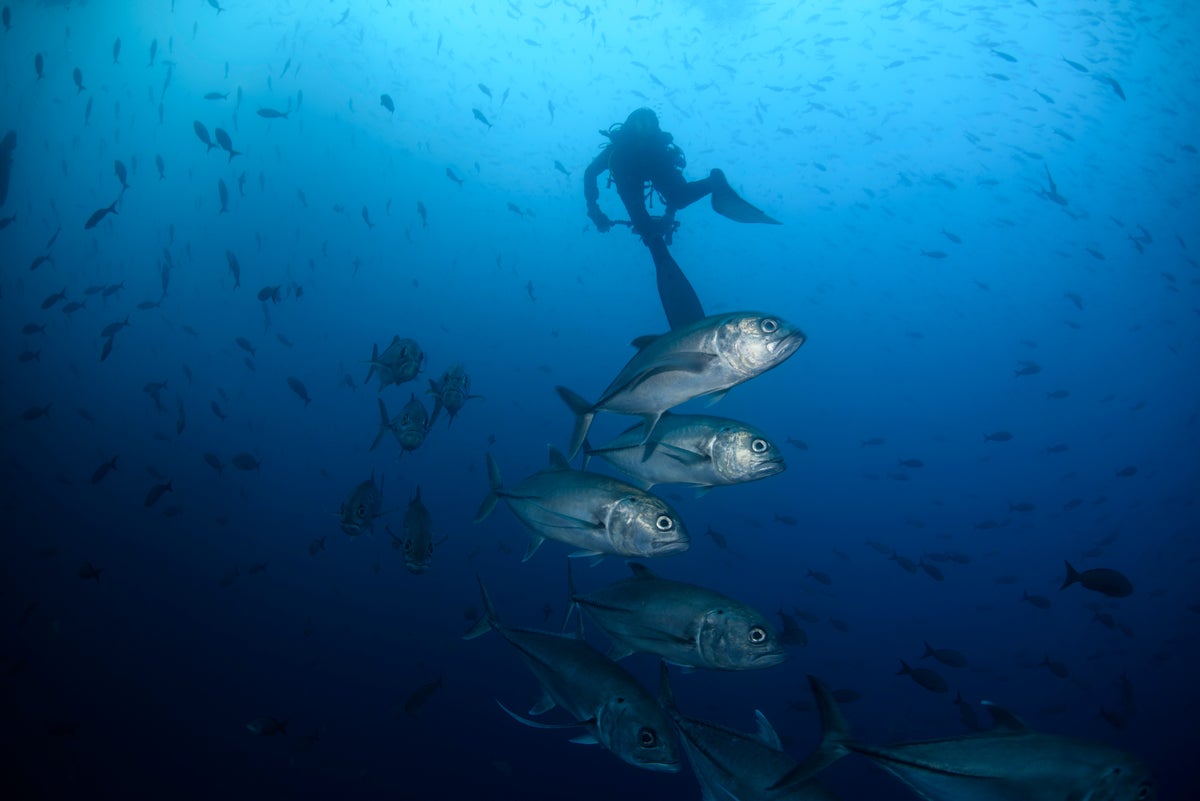
Your support helps us to tell the story
Two years after reaching a historic biodiversity agreement, countries will gather next week to determine whether they are making progress on efforts to save Earth's plant and animal life.
The agreement signed by 196 countries at the United Nations Biodiversity Conference calls for protecting 30% of land and water by 2030, known as 30 by 30. When the agreement was signed, 17% of terrestrial and 10% of marine areas were protected — which hasn't changed significantly.
At the conference known as COP16, countries next will report on progress made toward the goals, and governments are expected to agree on mechanisms to assure the implementation of them, according to a European Parliament report.
The two-week meeting in Cali, Colombia will also focus on efforts to raise hundreds of billions of dollars to protect nature by 2030 — with the payment of $20 billion for developing countries due next year. Twenty-three targets will be discussed including cutting food waste and preventing the introduction of invasive species.
Signs of progress hard to find
The nearly 200 countries are supposed to submit national plans ahead of the conference showing actions they are taking to meet the 30 by 30 goals. But as of this week, around 43% of countries have submitted targets and only 13% submitted plans for reaching them. Australia has yet to submit its targets while India has not submitted a national plan. Brazil, which includes much of the Amazon rainforest, hasn't submitted targets or a plan.
The United States, which is not party to the biodiversity convention, is not required to submit any plans. But the Biden Administration has committed to protecting a third of American land and waters by 2030.
Some countries are expected to use the conference to unveil plans for creating or expanding protected areas and for how they'll spend biodiversity funding. Canada, for example, has committed to spending $800 million on four Indigenous-led projects.
Conservation groups are concerned that more countries have not yet detailed their biodiversity goals and how to achieve them.
Bernadette Fischler Hooper, head of global advocacy for WWF International, called the commitments so far “disappointing.” WWF, which is tracking the progress, also found some plans lack actions to halt biodiversity loss, funding to support efforts and sufficient buy-in from across government.
“This is really, really getting close,” Hooper said. “There are some countries who can easily afford to update (their plans). There’s no reason why they didn’t do it ... and there are countries that didn't get the support they needed.”
Of the 87 countries that submitted targets, the convention's secretariat found more than half had targets of protecting and conserving at least 30% of their terrestrial area and about a quarter had targets for 5% to 30%. For marine and coastal areas, more than one-third had a national target of 30% or more, and another third had targets between 5% and 30%.
Achieving these targets is especially critical to migratory species, more than 40% which a U.N. report found are declining.
"Birds do not recognize boundaries of a protected area and move according to their feeding and roosting needs,” said Jennifer George, who leads the Seoul-based East Asian-Australasian Flyway Partnership, a nonprofit focused on birds migrating between East Asia, Australia and New Zealand.
Funding Crunch
Much like the U.N. climate talks, a big topic of debate at the biodiversity conference will be financing.
Poor countries pushed to include language requiring that $200 billion a year be raised by 2030 for biodiversity from a range of sources to fund the target-specific projects. Rich countries committed to providing developing countries $20 billion starting next year and gradually scaling that up to $30 billion by 2030.
The Organization for Economic Cooperation and Development reported in a September that development finance for biodiversity had more than doubled from 2015 to 2022. But when it comes to funding for this agreement, the world was still 23% short of the $20 billion goal.
Advocates said money will be critical since much of the biodiversity that needs protecting is in developing countries like those in Africa.
“There has been progress. Is there enough progress. No,” Susan Lieberman, the vice president of international policy at Wildlife Conservation Society.
“Some countries are taking it seriously and other countries are saying, ‘Oh we want to do this, but where’s the money?’” she said.
More than 30 by 30
In addition to top-tier biodiversity targets, the conference will discuss a goal in the agreement to halt human-induced extinction of threatened species and, by 2050, to reduce extinction rates ten-fold. The goal also calls for increasing the “abundance of native wild species” to healthy levels.
But conservationist say the goals lack specifics and hope details can be agreed upon at the meeting.
“Many of these other targets need to be nailed down and quantified, like stopping species extinctions,” said Duke University ecologist Stuart Pimm. “At the moment, they are terribly vague.”
Countries plan to showcase the role biodiversity plays in achieving climate mitigation goals and in health, especially preventing future pandemics.
The meeting will also consider adoption of a global mechanism for sharing of benefits from digital data from genetic material derived from plants, animals, bacteria and viruses. The materials are often used to developed commercial products like drugs — and the hope is that an agreement will ensure profits are shared equitably.







